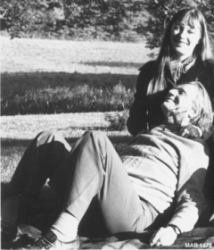
Charles Rennie Macintosh (1868-1928) the Glasgow-born architect and designer, is a seminal figure in 20th century design, and (with Archibald Knox and Eileen Gray) one of the ultimate products of the Arts & Crafts movement in the UK. CRM's influence and legacy is difficult to overstate. The elegance and clarity of his spatial concepts and skillful use of light, his lifelong collaboration with his wife and design partner Margaret MacDonald, his balancing of influences ranging from traditional Scottish forms to the Vienna Secession and Arts & Crafts, all contribute to Macintosh's standing as an iconic and singularly important figure in the history of modernism. CRM began his studies at the Glasgow School of Art in 1884, then started a 5-year architectural apprenticeship in 1884 at the Glasgow office of John Hutchins. In 1889 he moved to Honeyman & Keppie, then a traditional Beaux Arts practice. In 1896 CRM's design for a new Glasgow School of the Arts building won the contest and commission for H&K, and would become a celebrated building and career-defining project for him. A group coalesced that became known as The Four: CRM, Margaret MacDonald, her sister Frances, and Herbert McNair. These were CRM's principal collaborators on a series of projects that filled the next decade: the School for the Arts (Stages 1 & 2, 1896-9 & 1907-9), his home at 120 Main Street, the 8th Exhibition of the Vienna Secession (by invitation of Josef Hoffman), the Hill House and Willow Tea Rooms in Glasgow, and the famous Rose Boudouir for the 1902 Turin Exhibition. Each project advanced specific aspects of CRM's unique and highly personal vision which melded strict architectural lines with natural, organic motifs, the resulting whole clearly achieved as a combination of individual elements. Furniture designed for the various interiors encapsulates the larger work- distinct geometries merged with curvilinear forms to an entirely new and unique effect. The palpable interplay of function and form indicates a new sensibility, an awareness of new ideas and influences resulting in authentic and fully integrated forms. Although public regard for his career has waxed and waned, Macintosh has so often been "rediscovered" that he is now universally acclaimed for the lasting impact of his progressive, romantic modernism.








.png)